A recent opinion piece titled “India’s South Rejects Modi — And Why It Matters,” published by Bloomberg Media, has ignited significant controversy. Penned by Andy Mukherjee, the article begins by drawing comparisons between states in North and South India, portraying the former negatively and praising the latter for its supposed excellence. Mukherjee asserts that states like Uttar Pradesh and Bihar, which endorse Prime Minister Narendra Modi, exhibit poverty and lack of development, while Southern states flourish due to their opposition to Modi’s leadership.
Further, Mukherjee criticizes the ruling administration’s handling of Hindutva and the construction of the Ram Mandir. He also highlights the case of Arvind Kejriwal, Chief Minister of Delhi, mentioning his imprisonment by federal agencies before elections, while noting his aspirations to improve medical facilities in line with Kerala’s standards.
The tone of Mukherjee’s narrative is divisive, aiming to create discord between North and South India while disparaging North Indians. He suggests that North Indians should adopt ideologies such as Periyarism and Marxism or assimilate with the South for development. Mukherjee goes so far as to claim that those in North India who support the Bharatiya Janata Party are portrayed as poor, uneducated, and uncivilized, while those in the South who reject Modi are depicted as intellectually superior and excelling in various human development indices.
In response to these assertions, it is essential to thoroughly examine and challenge each accusation using verifiable facts, figures, and logical analysis.
Also Read: Khan Sir’s Claim of Cow Meat Firm Funding Electoral Bonds Found Misleading
Claim 1: Uttar Pradesh is poorer than Sub- African countries
The comparison drawn in the article between Uttar Pradesh and cities in sub-Saharan Africa, such as Ouagadougou and Luanda, raises questions about the author’s understanding of the economic realities in both regions. As a native of North India, the author presumably possesses knowledge of cities like Noida, Lucknow, Varanasi, and Prayagraj, which exhibit varying degrees of development and infrastructure.
However, the author’s argument that Uttar Pradesh, despite being more populous than Brazil, fares poorer than certain sub-Saharan African countries necessitates careful examination. While Uttar Pradesh faces its share of developmental challenges, including poverty and infrastructure deficiencies, equating its economic condition with that of cities in sub-Saharan Africa may overlook important nuances.
Uttar Pradesh’s current Gross Domestic Product (GDP) stands at $313 billion, with the state government aiming to elevate it to a trillion-dollar economy under the leadership of the Chief Minister Yogi Adityanath. When juxtaposed with the GDP figures of several sub-Saharan African countries, such as Angola, Botswana, Kenya, and Liberia, Uttar Pradesh’s economic stature becomes more apparent.
Angola boasts a GDP of $135.558 billion, Botswana $61 billion, Kenya $113.42 billion, and Liberia (PPP) a modest $8 billion. Nigeria stands out in Africa with a GDP of $477 billion.
While it’s clear that Uttar Pradesh has encountered obstacles to development under previous political administrations, likening its economic standing to that of sub-Saharan African countries may oversimplify the complexities at play. Instead, it’s imperative to acknowledge the progress being achieved in economic growth and development within Uttar Pradesh, while also acknowledging the persistent challenges and the strategies implemented by the current government to address them.
Claim 2: South India has rejected Prime Minister Narendra Modi and his political party Bharatiya Janata Party.
Contrary to the assertion, the Bharatiya Janata Party (BJP) holds a significant presence in Southern India, with a notable number of Members of Parliament (MPs) hailing from the region. Out of the 130 MP seats in the South, the BJP commands 29, showcasing its considerable representation. In states like Karnataka, where the BJP serves as the primary opposition, and in Union territory Puducherry, where the ruling party aligns with the BJP-led National Democratic Alliance, the party’s influence is palpable.
Additionally, in Andhra Pradesh, the BJP forms an alliance with the Telugu Desam Party (TDP), a major regional force and the principal opposition party. Recent electoral outcomes in Telangana further underscore the BJP’s growing traction, as evidenced by a significant increase in vote share and the acquisition of eight seats in the state assembly elections.
Looking ahead, prospects for the BJP appear promising in Tamil Nadu, with several pollsters anticipating a surge in the party’s vote share in the upcoming general elections. In Kerala, the BJP has witnessed an uptick in its vote share, reaching over 13 percent in the 2019 general elections, marking a notable increase from previous elections.

Therefore, characterizing the BJP’s presence in Southern India as a rejection is misleading. Rather, the party’s expanding vote share and electoral gains across various states in the region suggest growing acceptance and influence. While challenges persist in certain areas, the BJP’s strengthened position underscores its ongoing efforts to consolidate support and expand its footprint in Southern India.
Claim 3: The gap between North and South India has widened during Modi’s tenure as Prime Minister.
Andy Mukherjee’s argument appears to echo sentiments often voiced by opposition parties in India, but a closer examination reveals several flaws in his reasoning. Recent developments, such as the construction of the Thalaserry-Mahe Bypass in Kerala by the Union government and the introduction of 12 Vande Bharat trains connecting cities in Southern India, demonstrate the government’s commitment to infrastructure development across the country, regardless of regional distinctions.
Moreover, substantial investments in infrastructure projects and development funds allocated to states like Tamil Nadu underscore the Union government’s efforts to bridge any perceived gap between North and South India. Initiatives like the Kashi Tamil Sangamam further highlight cultural exchanges and connections fostered by the government.
However, Mukherjee’s perspective may stem from recent controversies surrounding money allocation between Southern Indian states and the Union government. It’s important to note that under Article 280 of the Indian Constitution, the Finance Commission determines allocation based on various criteria such as income distance, population, and fiscal efforts, rather than political considerations.
Ultimately, Mukherjee’s argument appears to propagate divisive narratives rather than offering a nuanced understanding of the complexities involved. It’s essential to approach discussions on regional disparities with factual accuracy and a commitment to fostering unity and development across all parts of India.
Claim 4: South India is progressing because it embraces tolerance and inclusivity, unlike the North Indian States.
It’s indeed heartening to witness the progress of Indian states, yet it’s unjust to belittle others in the process. At the 2023 India Today Conclave, BJP Tamil Nadu State President Annamalai shed light on an intriguing historical perspective. He noted that post-Independence, Jawaharlal Nehru ensured the establishment of numerous educational, research institutes, and public sector companies in South India due to perceived threats from Pakistan and China. This strategic move, along with the relocation of critical central government institutions to Chennai and Bangalore, bolstered the region’s growth.
Moreover, the Freight Equalisation Policy (FEP) introduced in 1952 aimed to promote industrial equity by subsidizing long-distance freight transportation of essential commodities. However, despite its noble intentions, FEP inadvertently disadvantaged mineral-rich states like Bihar, Jharkhand, and others in the east, hindering their economic prospects. Former President Pranab Mukherjee and scholars like Professor Stuart Corbridge have criticized FEP for exacerbating regional disparities. Combining the historical context of central institutions’ concentration in South India with the unintended consequences of FEP, it becomes evident how these factors contribute to the region’s relative development and its substantial contribution to the nation’s GDP compared to North Indian states.
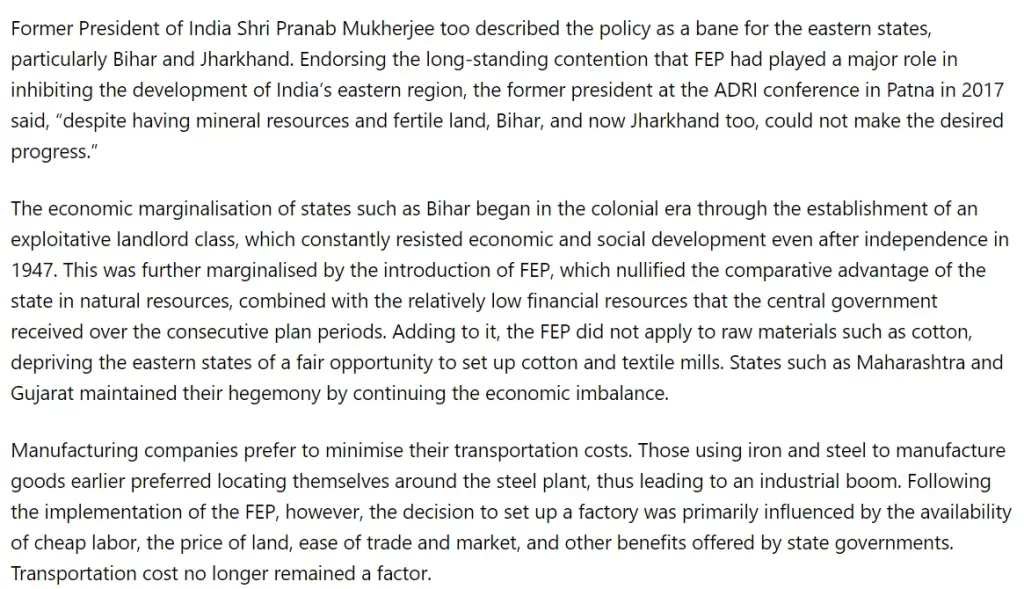
Claim 5: Kerala’s performance in managing COVID-19 was the best in the country.
Kerala’s response to the COVID-19 pandemic in 2020 faced criticism, with its performance in managing the crisis coming under scrutiny. As of April 10, 2024, Kerala reported a total of 72,105 COVID-19-related deaths, compared to Uttar Pradesh’s 23,724. Considering Kerala’s population of around 4 crore and Uttar Pradesh’s population of 24 crores, it can be argued that Uttar Pradesh performed relatively better in handling the pandemic.
In terms of COVID-19 fatalities, Kerala ranked as the second worst affected state after Maharashtra.
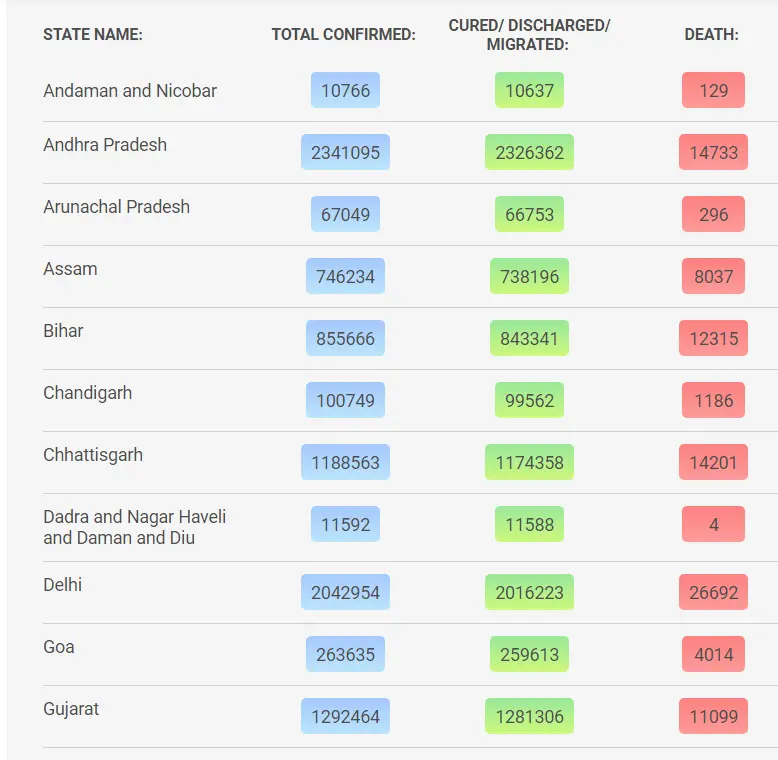

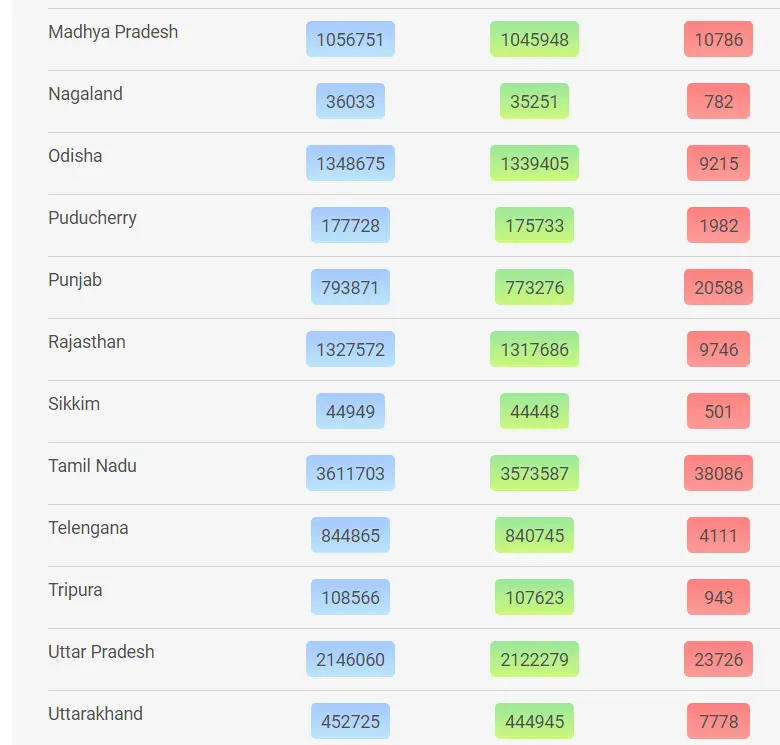
Claim 6: People in North India support Modi because he provides them with food and money and they are famously called ‘labharthi’
The term “labharthi” commonly refers to beneficiaries, and it’s worth noting that the Bharatiya Janata Party, led by Narendra Modi, secured victory in the 2014 general elections without resorting to food or monetary distribution tactics. Subsequent state assembly elections were also won without such measures. It wasn’t until the onset of the COVID-19 pandemic that the Union government initiated free ration distribution.
Regarding other central government schemes, while housing initiatives for the poor existed prior to Modi’s tenure, it was under his leadership that significant strides were made in implementation. Approximately 4 crore houses were constructed in rural and urban areas combined, translating promises into tangible outcomes.
Importantly, these government schemes extend beyond the northern states, reaching beneficiaries nationwide. Farmers from regions like Vellore and Varanasi alike receive direct transfers of ₹6000 annually into their bank accounts, demonstrating an equitable distribution of benefits irrespective of caste, creed, or religion.
Claim 7: Per capita domestic product in the north, mostly ruled by Modi’s BJP, is a lot lower than in the south where his party is not in power in any state
In Andy Mukherjee’s argument, he notably omitted the significant states of Gujarat and Haryana, both governed by the Bharatiya Janata Party. Despite Gujarat’s location in the western part of India, Mukherjee utilized its poverty data to juxtapose it with southern states. Therefore, it is only fare to compare Gujarat’s per capita income with that of the southern states.
Recent figures from 2021-22 reveal Gujarat’s per capita income to be ₹2,50,100 and Haryana’s to be ₹2,64,835. In contrast, Tamil Nadu’s per capita income stands at ₹2,41,131 Kerala’s at ₹2,28,767, Karnataka’s at ₹2,65,623 and Andhra Pradesh’s at ₹1,92,587. Notably, most of the aforementioned southern states fall short in per capita income when compared to Gujarat and Haryana.

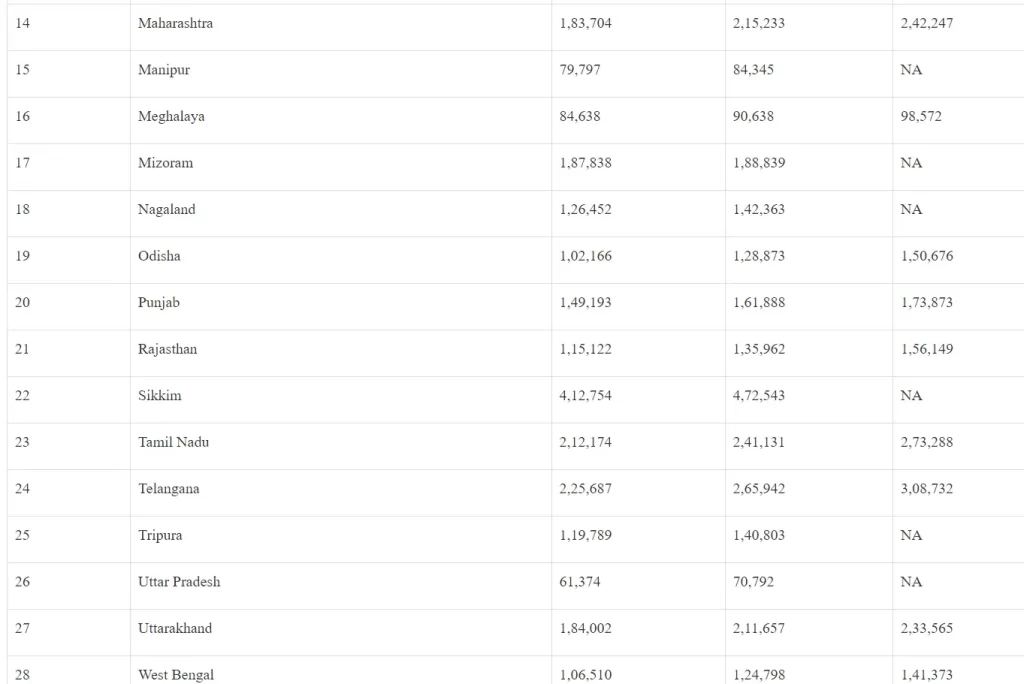
Claim 8: A scheme by the Congress government in Karnataka, providing free rides to women, is encouraging more women to join the workforce.
Andy’s assertion lacks empirical evidence and relies solely on assumptions. For instance, he overlooks the significant contributions of women to the workforce in states like Himachal Pradesh, Jharkhand, Ladakh, Dadar and Nagar Haveli, Sikkim, Meghalaya, Madhya Pradesh, and Karnataka, where women contribute substantially to economic activities despite not receiving any form of preferential treatment.

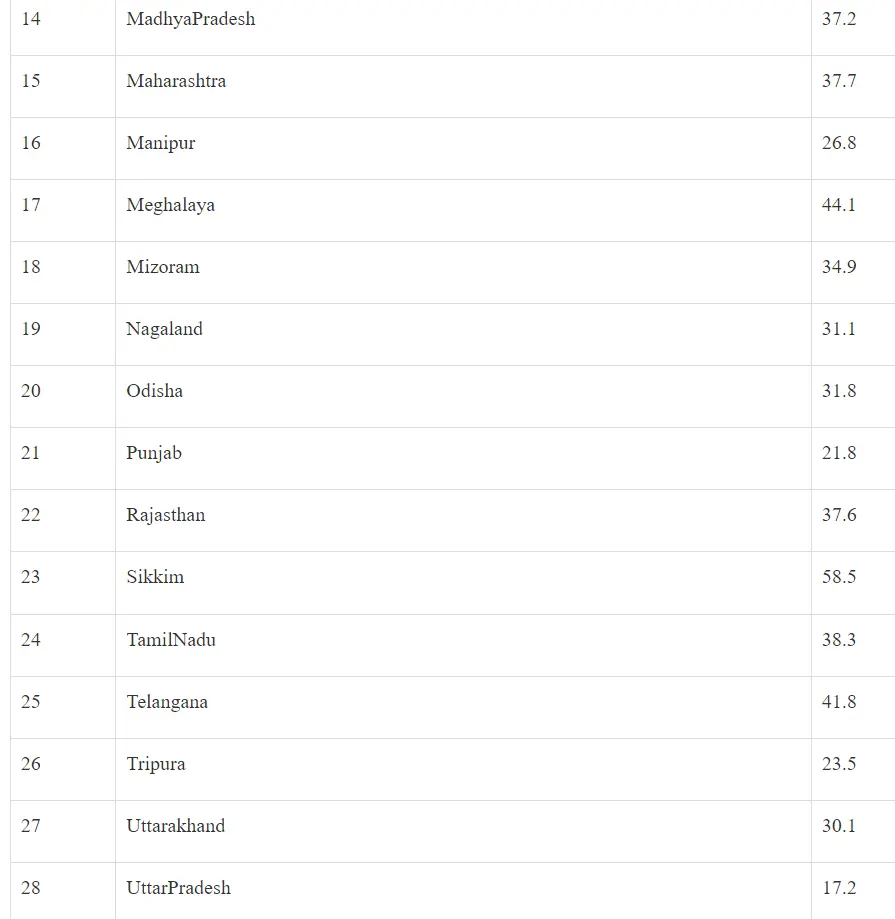
The varied participation rates of women in the workforce across states can be attributed to diverse socioeconomic models, including differences in educational opportunities and employment patterns.
Research conducted by organizations like the Observer Research Foundation (ORF) sheds light on this phenomenon. Reports such as the State of Working India Report 2023 indicate a narrowing gender gap in employment trends, driven by structural shifts in the economy. These shifts include the exit of older women with lower education levels from the workforce, alongside the entry of younger women with higher educational attainment.
Furthermore, the transition of women from informal wage work to salaried employment and the declining proportion of women engaged in agriculture underscore evolving patterns in female workforce participation. Additionally, it’s crucial to recognize the significant but often unrecognized contribution of women to unpaid economic work, such as household chores and family enterprises.
While providing free rides to women may seem benevolent, it fails to address the underlying structural factors contributing to gender disparities in employment. These disparities stem largely from societal norms that confine women to household roles, perpetuating the undervaluation of their economic contributions. Addressing these deep-rooted issues requires comprehensive policy interventions aimed at transforming societal attitudes and creating equitable opportunities for women in the workforce.
Claim 9: South India lacks significant representation in Indian politics.
It’s misleading to claim that South India lacks representation in Indian politics, as politicians from the region have consistently held prominent positions regardless of the ruling party at the center.
For instance, key ministerial portfolios in the current Union government are held by individuals from South India, including Finance Minister Nirmala Sitharaman, Minister of External Affairs S Jaishankar, and Minister of Culture and Tourism G Kishan Reddy. Additionally, several Ministers of State hail from South India, such as V. Muraleedharan, Abbiah Narayanaswamy, Shobha Karandlaje, L Murugan, Bhagwanth Khuba, and Rajeev Chandrashekhar.
With approximately 130 seats, South India holds over 23 percent of the total seats in the Lok Sabha, comprising five states. While this percentage may seem proportionate, it’s important to note that Uttar Pradesh alone, with its sizable population, accounts for the majority of seats with 80.
Nevertheless, the Modi government has made efforts to ensure adequate representation from South India by appointing ministers from the region, aiming to address the diverse needs and concerns of Southern states.
In conclusion, Andy Mukherjee’s divisive approach towards North India, evident in his comparison between North and South states, only serves to sow discord and perpetuate regional biases. By cherry-picking data and making sweeping generalizations, Mukherjee overlooks the complexities of India’s diverse socio-economic landscape and undermines the unity that has been upheld for centuries.
Furthermore, Bloomberg’s decision to publish such an article, which aims to pit regions against each other, is regrettable. Instead of fostering inclusivity, the publication of divisive narratives risks exacerbating tensions and eroding the fabric of India’s harmonious coexistence.
It’s crucial to reject such divisive rhetoric and embrace the rich diversity that defines India. Rather than highlighting perceived differences, efforts should be directed towards celebrating the shared heritage and values that bind the nation together. Only through unity and mutual respect can India continue to progress and thrive as a united and inclusive nation.
Also Read: Vellore: Allegations Against PM Modi Pushing Elderly Man on Stage is False









